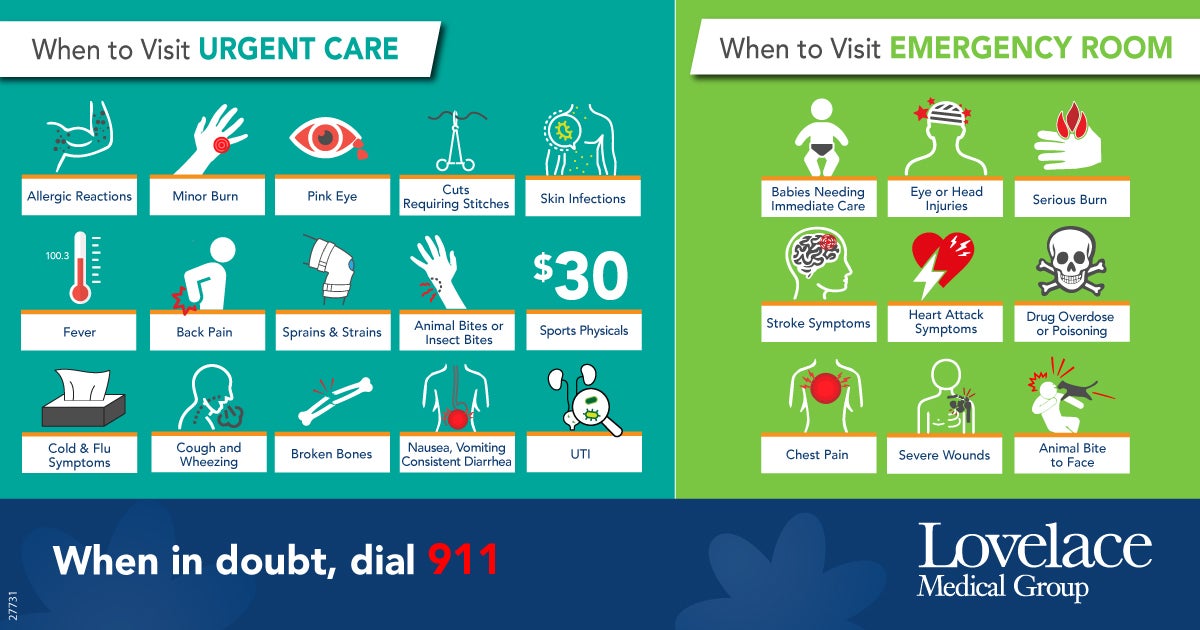Urgent Care: Linking the Void In Between Primary Care and Emergency Situation Rooms
Urgent treatment facilities have actually become crucial elements in the medical care continuum, efficiently resolving the requirements of individuals that need instant clinical interest for non-life-threatening problems. By supplying solutions beyond typical workplace hours and accommodating walk-in patients, these centers play a critical function in minimizing the pressure on emergency rooms. The landscape of immediate care is complex, with distinctive differences from both key treatment and emergency situation services. Understanding these nuances can considerably impact patient outcomes and medical care performance, prompting more expedition into exactly how immediate treatment can reshape the future of medical access.
What Is Urgent Care?
Immediate treatment represents a crucial component of the medical care system, offering instant medical interest for non-life-threatening conditions that need prompt intervention. These centers are made to connect the space in between medical care carriers and emergency situation departments, enabling individuals to obtain prompt treatment without the extensive delay times commonly related to emergency clinic.
Immediate treatment centers commonly operate beyond traditional workplace hours, accommodating individuals throughout evenings and weekend breaks. They are staffed by health care professionals, including doctors, registered nurse professionals, and doctor assistants, who are trained to diagnose and treat a vast array of medical concerns - urgent care fresno. Usual conditions dealt with at urgent treatment centers include minor fractures, strains, infections, allergies, and small cuts requiring stitches
The access of urgent care services has made them a preferred option for people looking for immediate relief from acute medical problems. This model not just minimizes stress on emergency situation divisions however also advertises a more effective use of healthcare sources. By giving a practical option for non-emergency circumstances, immediate treatment plays an important role in improving overall client treatment and enhancing health and wellness results for areas.
## When to Use Urgent Care
When to make use of urgent treatment can dramatically impact client outcomes and source allocation within the healthcare system,Knowing. Urgent treatment facilities are developed to attend to non-life-threatening clinical concerns that need instant interest however do not demand the sources of an emergency situation room.
Clients must consider checking out immediate care for conditions such as minor fractures, sprains, cuts needing stitches, and light to moderate diseases like flu symptoms, infections, or allergic reactions. Furthermore, urgent treatment is ideal for analysis services, such as X-rays and lab examinations, which can offer prompt outcomes for common conditions.
It is essential to distinguish in between circumstances that necessitate immediate treatment and those that call for emergency solutions. Severe injuries, chest pain, trouble breathing, or signs of stroke need to prompt immediate emergency situation area brows through. Understanding these distinctions can bring about much more efficient use of health care sources, reducing delay times in emergency situation departments and making sure that those in important need obtain timely interventions.
Advantages of Urgent Treatment
Accessing urgent care supplies many advantages for clients seeking timely clinical interest. Among the main benefits is reduced waiting times contrasted to conventional emergency clinic. Urgent care centers are developed to accommodate clients with non-life-threatening conditions, permitting quicker diagnosis and treatment - urgent care fresno. This performance not just improves person satisfaction yet likewise eases the problem on emergency situation services.

Cost-effectiveness is an additional substantial benefit. Urgent treatment brows through normally incur lower out-of-pocket expenses than emergency clinic gos to, making it a much more economically feasible alternative for clients. Several urgent treatment centers approve a vast array of insurance coverage strategies, further relieving the economic burden.
Additionally, immediate treatment facilities are geared up to manage a range of conditions, from minor injuries to typical diseases, supplying comprehensive care in a single place. This multi-faceted approach not just improves the individual experience yet likewise promotes connection of treatment, enhancing general wellness results.
Distinctions From Medical Care
Usually overlooked, the distinctions between immediate treatment and primary care are crucial for patients navigating their healthcare choices. Immediate care facilities primarily attend to immediate, non-life-threatening medical issues that need punctual attention, such as minor injuries, infections, and diseases. These facilities usually run outside of regular workplace click this link hours and do not call for consultations, making them a practical option for patients who need fast support.
In contrast, health care providers concentrate on thorough, recurring wellness administration. They construct long-lasting relationships with individuals, supervising preventative treatment, persistent disease management, and routine health testings. Main treatment highlights connection of treatment, permitting customized therapy plans and comprehensive wellness evaluations that urgent care setups can not offer.
Furthermore, medical care physicians often coordinate references to specialists and maintain thorough medical backgrounds, which is important for taking care of intricate health and wellness concerns over time. While immediate care can effectively address intense issues, it ought to not change the fundamental function of health care in overall wellness administration. urgent care fresno. Understanding these distinctions assists clients make notified choices about where to look for care based upon their details health and wellness demands
Differences From Emergency Clinic
Individuals often discover themselves unpredictable concerning when to visit an urgent care center versus an emergency clinic. Comprehending the key differences can assist in making the best option for their health care needs.

In contrast, emergency clinic are geared up to take care of critical and life-threatening conditions, such as extreme trauma, cardiovascular disease, or strokes. Individuals experiencing signs and symptoms that present a prompt threat to their health and wellness need to look for care at an emergency situation space. Emergency situation departments are staffed with specific medical workers and have innovative analysis devices to handle intricate situations.
An additional substantial difference hinges on the price and wait times. Urgent treatment check outs tend to be a lot more budget friendly and include shorter wait times compared to emergency situation spaces, which frequently experience high person volumes. Ultimately, recognizing these differences encourages patients to make educated choices, guaranteeing they receive timely and proper treatment.
Verdict
In conclusion, immediate care serves a critical role in the health care system by giving prompt clinical focus for non-life-threatening problems. Its ease of access, prolonged hours, and cost-effectiveness placement it as an important source for patients looking for instant treatment. By properly linking the void you could try these out in between health care and emergency situation solutions, immediate care centers aid to reduce the stress on emergency divisions, ensuring that patients receive suitable and efficient find here treatment without unneeded hold-ups.
The landscape of immediate care is complex, with distinctive distinctions from both key care and emergency services. By supplying a practical alternative for non-emergency situations, urgent care plays a vital role in enhancing total client treatment and enhancing health end results for neighborhoods.
Commonly overlooked, the differences between urgent treatment and main care are crucial for patients browsing their healthcare options. Primary treatment highlights continuity of treatment, permitting for personalized therapy plans and comprehensive health and wellness analyses that urgent treatment setups can not supply.
By efficiently bridging the gap between main care and emergency situation services, immediate treatment facilities aid to minimize the pressure on emergency divisions, making certain that clients obtain effective and appropriate therapy without unneeded delays.